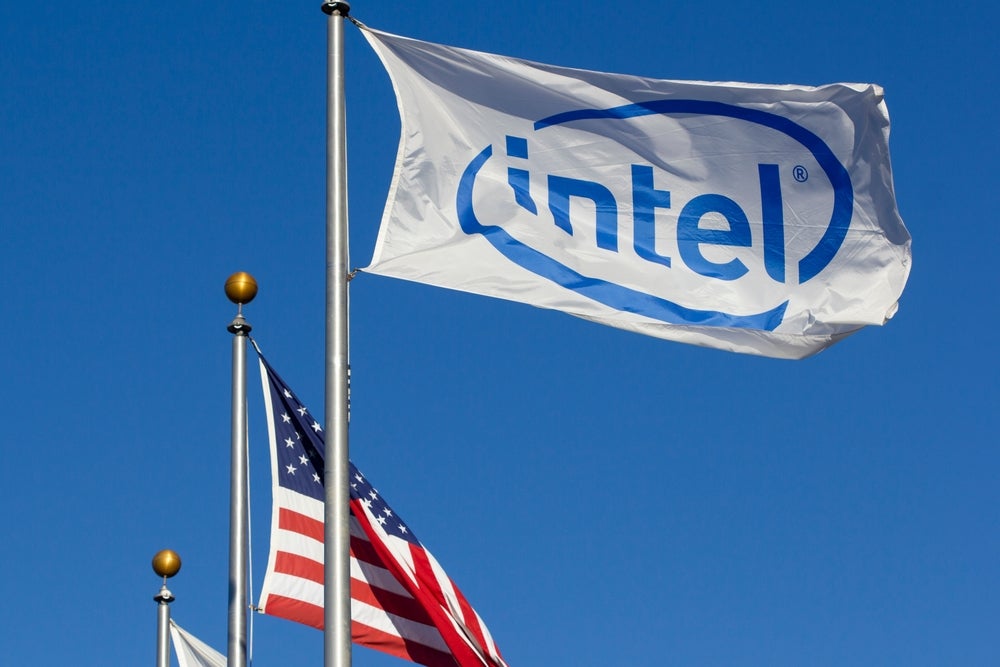
On 27 November, the US Department of Commerce finalised $7.86bn in direct funding to domestic chip maker, Intel, to advance its semiconductor manufacturing capacity on US soil. Already allocated under the CHIPS and Science Act, the award was finalised in the last days of the Biden administration, at roughly $600m lower than the $8.5bn pledged after the act was passed in 2022.
The funding will support the development of the company’s semiconductor manufacturing facilities in Arizona, New Mexico, Ohio, and Oregon. Intel has committed to invest more than $90bn by the end of the decade in chipmaking and advanced packaging capacity in the US.
Under the leadership of CEO Pat Gelsinger since 2021, Intel is betting on becoming the world’s second biggest foundry operation after Taiwan’s TSMC by 2030, according to GlobalData senior consultant analyst Mike Orme.
“As the only US company involved in Washington’s onshoring of leading-edge chip production project, Intel will likely receive subsidies and contracts from Washington, notably via Pentagon and NSA/CIA supply contracts,” said Orme who predicts that Intel will, again, become the US national chip champion having lost that previous status around 2016 due to some “catastrophic mistakes on the production front.”
US reliance on Taiwanese chip manufacturing
Semiconductors have become a geopolitical issue of critical importance for both national security and economic stability, as demonstrated by the Biden administration’s prioritising the CHIPS and Science Act to ensure domestic manufacturing capacity.
The $53bn package of government incentives drew foreign chip makers to US shores, with TSMC planning a $65bn investment in three new Arizona fabs and Samsung a $17bn investment in a new Texas fab.

US Tariffs are shifting - will you react or anticipate?
Don’t let policy changes catch you off guard. Stay proactive with real-time data and expert analysis.
By GlobalDataAccording to the US Department of Commerce (DoC), the finalised $7.865bn in direct government funding to Intel will directly support Intel’s expected US investment of nearly $90bn by the end of the decade, which is part of the company’s overall $100bn expansion plan. The DoC will disburse the funds based on Intel’s completion of project milestones.
But none of these planned facilities will come on stream before 2026/27 – in part due to the CHIPS and Science Act funding delays. According to US Semiconductor Industry Association estimates, in May 2024, the country is on course to triple its semiconductor manufacturing capacity by 2032.
TSMC currently manufactures 95% of the global supply of advanced semiconductors which continues to present a significant supply chain risk. While overreliance on a single manufacturer is being addressed for the long-term, the short-term picture still presents challenges.
President-elect Trump’s November 5th victory adds further uncertainty to the mix. While Trump’s championing of domestic companies means that US government favour is unlikely to turn, it will still come as some relief to Intel that its CHIPS award has been finalised as the Biden administration draws to a close – no matter the shortfall.
Orme notes further geopolitical problems: “Under Taiwanese law TSMC can’t currently supply chips made with its latest process technology from its US based plant which is complicating issues between TSMC and Washington.”
Furthermore, Trump has accused the Taiwanese government of heavily subsidising TSMC in order to ‘steal’ the global chip industry from the US. With Tesla founder Elon Musk so closely integrated into the new US administration, it remains to be seen what emerges as chip policy over the next four years.
Intel can win on advanced chip manufacturing
Orme describes Intel’s 18A process technology using EUV chipmaking equipment from Dutch specialist ASML at “full throttle” as it works on prototyping very advanced 1.8 nanometre chips.
And Intel’s embryo 4A technology using ASML’s High NA EUV equipment (the most advanced development in EUV lithography) – which it was the first in the world to install, according to Orme – could come on stream in 2027. “This could triple leading edge transistor production per batch,” said Orme, noting that TSMC has said it expects to do the same by 2030.
As a result, Intel subsidiary, Intel Foundry Services (IFS), has gained some significant customers including Amazon, Microsoft, Qualcomm and Ericsson among others, according to Orme. “IFS will run off their new customised AI chips for them, in Ericsson’s case a 5G customised chipset, and in the cases of Microsoft and Ericsson Intel will help design them,” said Orme.
This core business, which includes some prepayments for IFS capacity, could amount to $15bn over the next few years, according to Intel. Which may, indeed, make the domestic chipmaker into the US national chip champion again.







